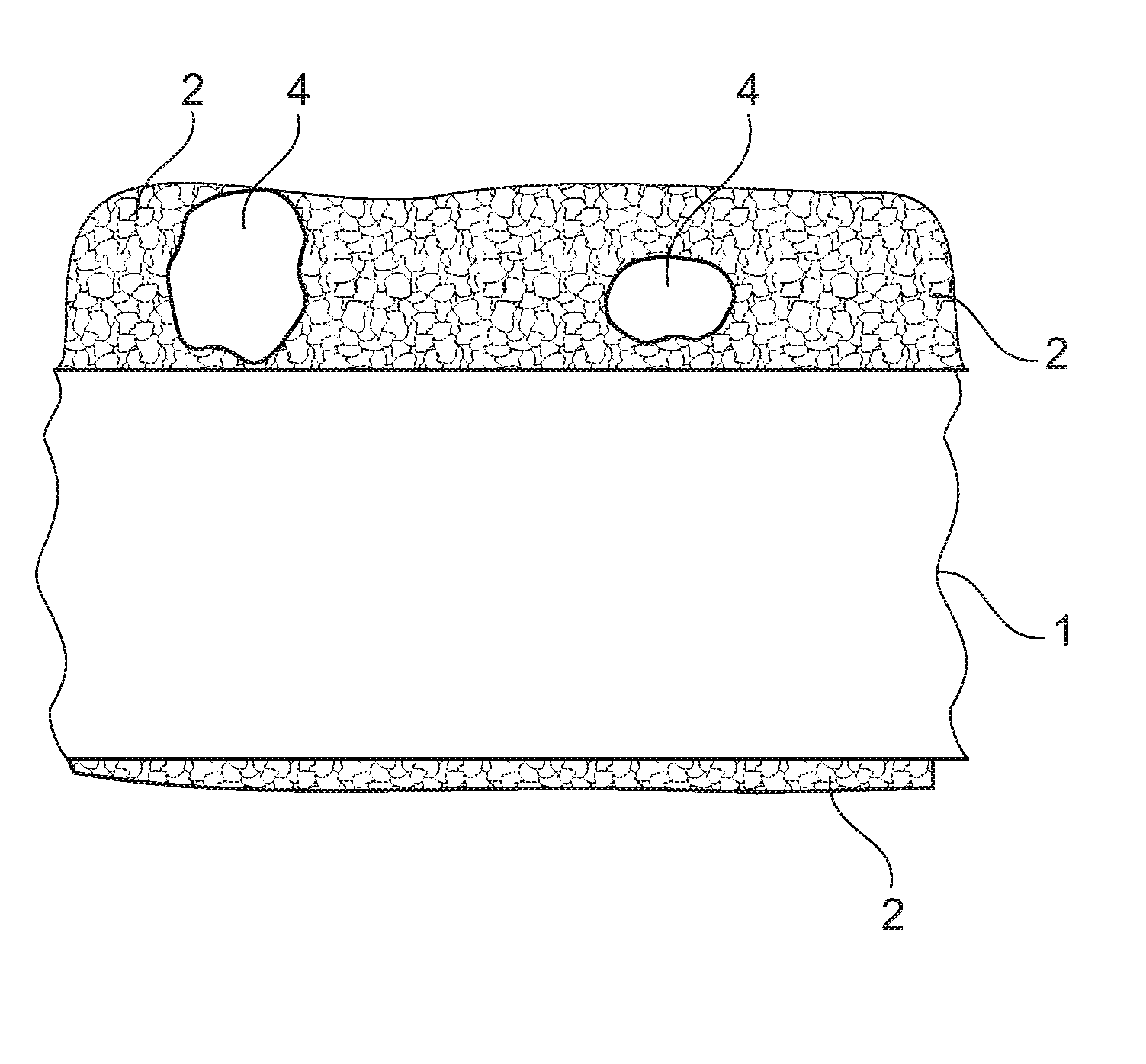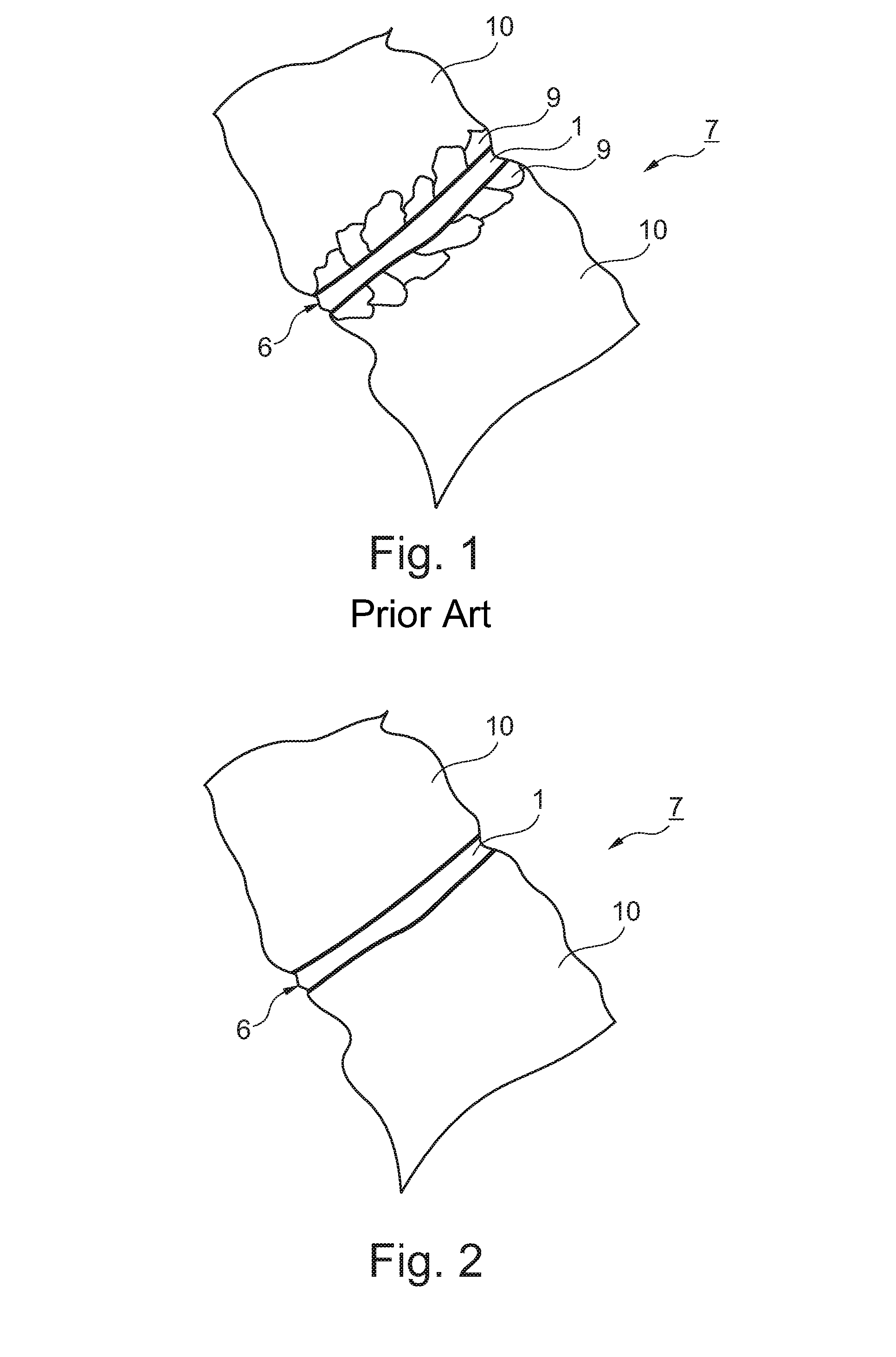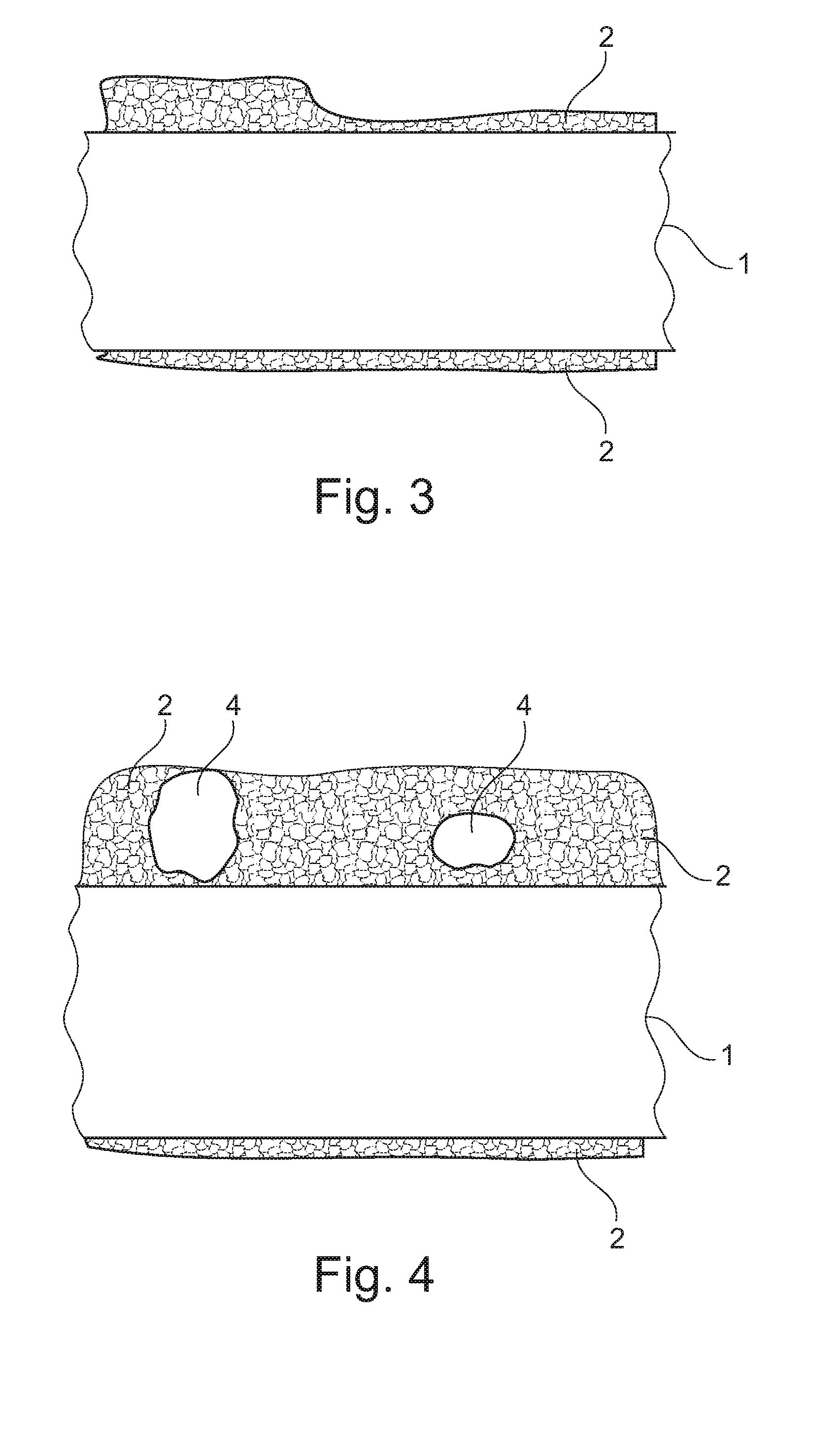Braze foil for high-temperature brazing and methods for repairing or producing components using a braze foil
a high-temperature brazing and high-temperature brazing technology, applied in the field of materials science, can solve the problems of undesirable cracks in materials, high mechanical load on turbine rotor blades in particular, and increase the efficiency of the plant, and achieve relatively large gaps, easy brazing, and relatively wide brazing gaps
- Summary
- Abstract
- Description
- Claims
- Application Information
AI Technical Summary
Benefits of technology
Problems solved by technology
Method used
Image
Examples
Embodiment Construction
[0044]In the text which follows, the invention is explained in more detail on the basis of exemplary embodiments and the drawings.
[0045]FIG. 1 schematically shows a joint 6 for repairing a damaged component 7 after a conventional brazing repair method according to the prior art. In the present case, the component 7 is a gas turbine blade or vane made of a single crystal base material 10, to be precise CMSX4 (10% by weight Co, 6.5% by weight Cr, 6.5% by weight Ta, 6% by weight W, 5.6% by weight Al, 2.9% by weight Re, 1% by weight Ti, 0.6% by weight Mo, 0.1% by weight Hf, remainder Ni). The joint 6 was repaired using a conventional braze foil 1, which was produced with the aid of a conventional melt-spin process known from the prior art. The chemical composition of the braze material was the following: 15% by weight Cr, 7.25% by weight Si, 1.4% by weight B, ≦0.06% by weight C, remainder Ni. FIG. 1 clearly shows the recrystallization region 9 around the gap to be brazed 6, where there ...
PUM
| Property | Measurement | Unit |
|---|---|---|
| particle size | aaaaa | aaaaa |
| particle size | aaaaa | aaaaa |
| temperatures | aaaaa | aaaaa |
Abstract
Description
Claims
Application Information
 Login to View More
Login to View More - R&D
- Intellectual Property
- Life Sciences
- Materials
- Tech Scout
- Unparalleled Data Quality
- Higher Quality Content
- 60% Fewer Hallucinations
Browse by: Latest US Patents, China's latest patents, Technical Efficacy Thesaurus, Application Domain, Technology Topic, Popular Technical Reports.
© 2025 PatSnap. All rights reserved.Legal|Privacy policy|Modern Slavery Act Transparency Statement|Sitemap|About US| Contact US: help@patsnap.com



